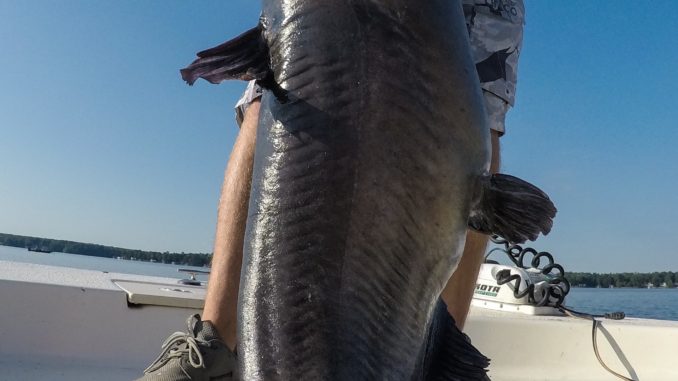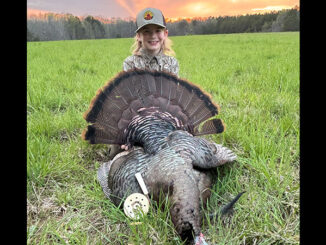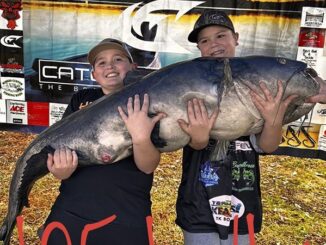
While many fish species lay low when summer temperatures skyrocket, blue catfish will be turning up the heat themselves.
According to guide Zakk Royce, the blues in Lake Gaston on the North Carolina-Virginia border will be fresh off the spawn this month and in hot pursuit of baitfish on main-lake points and the river channel just above the thermocline.
“July is an excellent time to fish for blues of all sizes,” said Royce (252-398-7192), who runs Blues Brothers Catfishing Guide Service. “If I had to pick one time of the year to fish, it would be the middle of summer — just because of how aggressive the fish are. They’re making up for lost time when they haven’t been feeding as much during the spawn. Their metabolism will be way up, and it will make for a really consistent bite.”
Royce’s key to summer catfishing is to keep an eye on the thermocline, a spot where cooler and warmer water meet and which is often depicted on a depth finder as a distinct line well above the bottom. Blues typically stay slightly above it because it contains the coolest water that is still well oxygenated.
His first approach is to target main-lake points at creek mouths and humps that rise above this depth — 20 feet or less. Mussel beds that provide additional forage in these areas are a major plus. Next, Royce heads to the main-river channel, often choosing areas with a sharp bend or junction with an old creek bed. Although depths here may reach 30 to 40 feet, Royce will suspend his baits at or above the thermocline, which will normally hover in the 15-foot range.
“I like to troll (with) slip floats in July,” he said. “One will run off each corner of the stern, and one will run off each side of the boat, spread out by planer boards. I’ll stagger the depths above the thermocline, but if one or two gets hammered consistently, I’ll adjust the others. Two or three feet can make a big difference. Anything between the thermocline and the surface is fair game.”
Royce trolls between .5 and 1 mph with cut shad, white perch or bluegill under a 3-inch, round slip float, but he has caught fish going as fast as 2 mph. He uses a 7/0 or 9/0 circle hook, tied to a 60-pound mono leader of 12 to 24 inches. A 3- to 4-ounce egg sinker rides above the swivel tied to 30-pound mono main line.





Be the first to comment